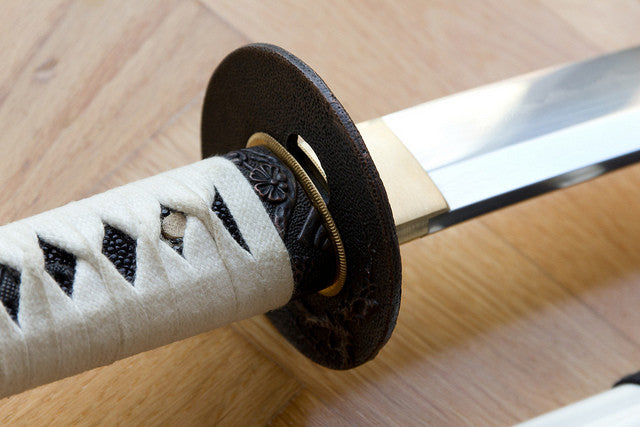Your Cart is Empty


One of the most influential elements in determining the quality of a sword is the metal used in its construction. Both bronze and iron, for instance, are relatively weak when compared to steel. Some of the early Korean and Japanese swords made of bronze and iron were susceptible to damage -- and a broken sword didn't offer much tactile advantage on the battlefield. This changed, however, with the invention of steel.
Steel swords offered a superior level of strength and durability. They were also better at holding an edge than iron and bronze swords.
Today, there are several different types of steel used to produce swords, including stainless steel and high-carbon steel. However, you won't find any respected sword makers using stainless steel for katanas or jingums. Why not? What's the difference between these two metals and how does it affect the quality of a sword?
Stainless Steel Swords
Stainless steel swords are made of a steel alloy consisting of roughly 12% chromium. Regular steel, on the other hand, consists primarily of iron and carbon with trace amounts of other compounds.
The inclusion of chromium offers a few key benefits, one of which is resistance to rust. When iron is exposed to moisture -- even small amounts of moisture in the air -- it triggers a chemical reaction known as "oxidation." If the process continues undisturbed, the iron will turn into a different iron oxide, or what's more commonly known as rust. Chromium protects against rusting by forming a thin layer over the iron, essentially blocking out the moisture.
Stainless steel swords are also easier to sharpen because they contain chromium. As a downside, though, they don't hold an edge as well as their high-carbon counterpart.
The critical problem with stainless steel sword is that it can fail catastrophically. While stainless steel makes an ideal material for short sword (or a kitchen knife), it is simply too risky to make a long sword (such as a katana) with stainless steel.
High-Carbon Swords
As the name suggests, a high-carbon sword is made of steel -- but with a higher concentration of carbon than traditional stainless steel. By adding more carbon, it allows for a harder, stronger blade. And with this increased strength, comes less wear on the blade. High-carbon steel swords can also hold an edge well.
High-carbon swords have minimal protection from rust, however. So if you plan to buy a high-carbon sword, be prepared to spend additional time and energy maintaining it. You'll need to carefully wipe the blade on a regular basis, ensuring there's no moisture whatsoever on it. Even fingerprint smudges can leave just enough moisture to trigger oxidation and rust.
It's also worth noting that even stainless steel may rust. Regardless of whether or not it has chromium, all steel is susceptible to rust and corrosion because it contains iron. Granted, modern alloy steel doesn't rust as quickly or easily as simple carbon steel, but owners of modern steel swords, knives and products should use caution to protect against moisture.
Photo credit: Bobo Boom